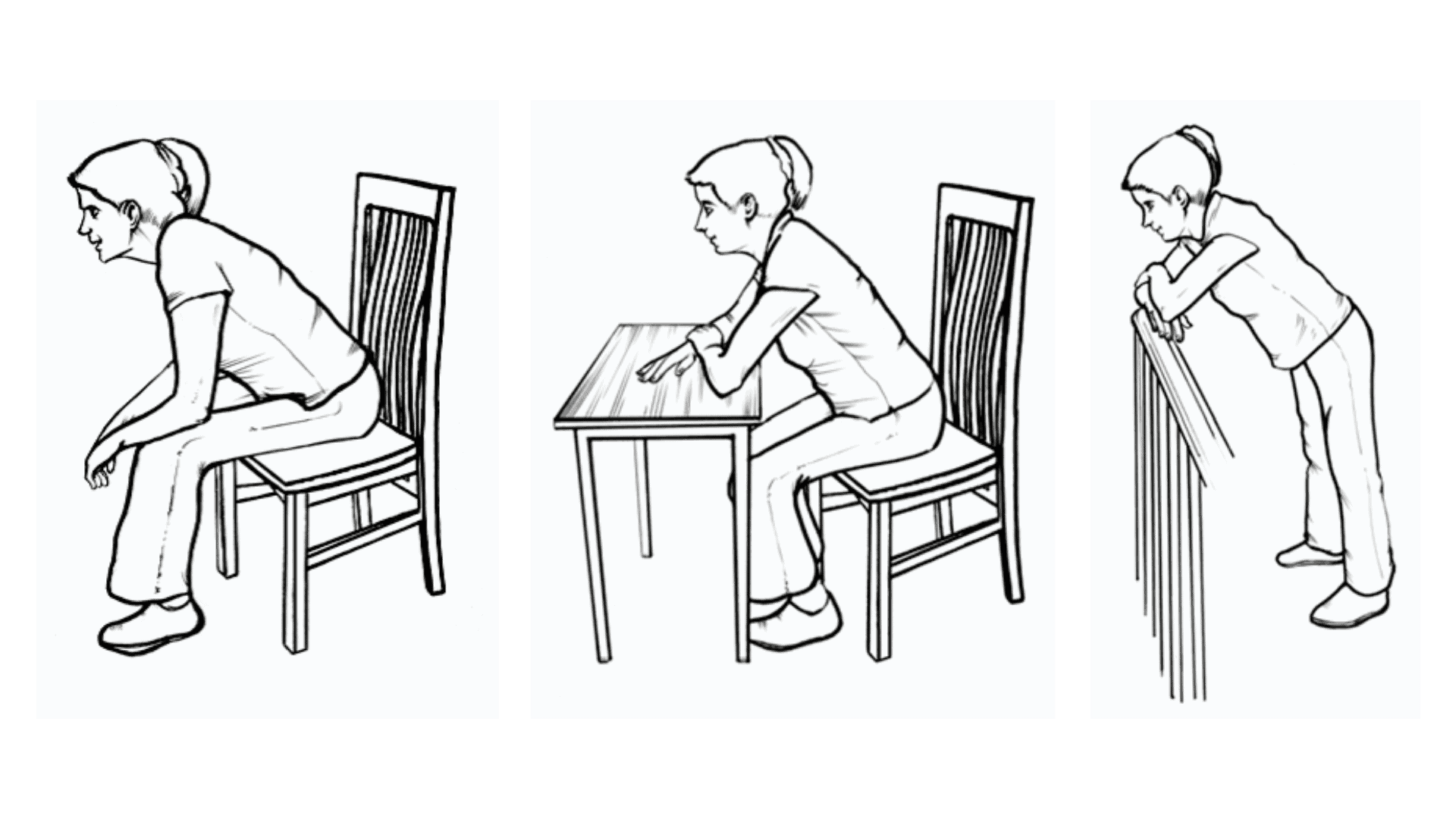Breathlessness management
Breathlessness can either be experienced as an ever-present sensation or intermittently and often linked to increased activity. It is not a pleasant feeling and can be accompanied by anxiety.
Unfortunately, the more anxious you are, the more breathless you can become. It can be helpful to explore what you feel is driving your breathlessness, whether it be more dependent on your condition or if you feel your anxiety is adding to it. This, in turn, will change the options that may best support you to manage the symptoms. For example, if it is due to your condition then looking at how you do activities to make things easier can be helpful such as different pieces of equipment or pacing yourself. If anxiety is also contributing then strategies such as relaxation and different breathing techniques can be very helpful. More information can be found in the video.

Breathing anatomy
Understanding the anatomy involved in breathing can be helpful in making sense of why your body is behaving the way it is. The diaphragm is the main muscle used when breathing. It is a large flat sheet of muscle that covers across the base of your rib cage. As you breathe in, it contracts and moves down to help pull air into your lungs – this is when your abdomen moves outwards. As the muscle relaxes, it moves back upwards, returning to its natural dome shape, and the air moves out of your lungs.
Generally, the diaphragm muscle does not tire easily and therefore can move up and down all day, every day without getting fatigued. However, when you are chronically breathless from an illness, the diaphragm may need support from other muscles around the chest, which are known as accessory muscles.

When you are breathless, many of the muscles around your neck and shoulders help with breathing by moving the ribs as you breathe in. These muscles help to expand the rib cage - ‘lifting’ them when the lungs expand to allow more air into the lungs. However, the primary job of these muscles is to move the neck and arms and because of this, they do not have the same endurance as the diaphragm and can get tired. This can contribute to you becoming more aware of your breathing, feeling like hard work.
When you are doing activities that involve your arms & shoulders, especially with them above your head, for example brushing/washing your hair or reaching up to a high cupboard, you may notice you become even shorter of breath than normal. This is because you are asking the accessory muscles to do two jobs at the same time and when they tire, they can become tight, stiff & sore. Keeping these muscles strong can be helpful in managing your breathlessness, so look at the upper limb strengthening exercises video for some tips on how to do this on the Exercise therapy page.
Breathing Exercises to help control breathing
When you are breathless there are a few breathing techniques you can try to calm the breathing down. Being confident in how to do diaphragmatic breathing is very helpful when living with a palliative/long-term condition that involves the respiratory and cardiac system, e.g. lung cancer, COPD. Knowing how to do this technique helps you refocus your breathing when it is feeling problematic. Another technique is called controlled breathing and can be used when you are breathing rapid and shallow breaths. This emphasis on the out-breath and clearing the lungs of air to allow for enough space to get a better and deeper breath in. See below for a break-down on how to do these exercises.
Diaphragmatic Breathing
This is a simple method of breathing that aims to make the most efficient use of your diaphragm. Diaphragmatic breathing should help you to avoid unnecessary respiratory effort and can help to relax and calm your breathing. It can be a useful method to help recover quicker from breathlessness after an activity or when you are feeling panicky.
When to use
We should be breathing from our diaphragm all the time, however, breathing from your abdomen in this way often does not come naturally when you have been experiencing breathlessness. You may need to practice it regularly to remaster the technique. We recommend you practice regularly for 5-10 minutes a few times a day, ensuring you are relaxed and comfortable. You can combine this with one of the relaxation videos from the Complementary therapy and relaxation section.
Diaphragmatic Breathing method:STEP ONE: Find a comfortable seat or position. Relax your shoulders and try to rest your elbows by your side. This is a gentle exercise. STEP TWO: Place your hands lightly on your abdomen (above your belly button around the bottom of your ribs). STEP THREE: Breathe in slowly and smoothly through your mouth or nose. You want to feel your abdomen rise out under your hands. Breathe in only the amount you need. *This is not a deep breath – but simply using the ‘correct’ muscle to breathe with * STEP FOUR: Breathe out slowly through your mouth. Your abdomen should fall inward. Repeat for 5-10 minutes |
Controlled Breathing
This is a method of taking control of your breathing when you are breathless or are feeling panic/anxious about your breathlessness. When you are breathing quickly it can be difficult to get a good clear breath and can lead to hyperinflation of the lungs. The breathing control method encourages you to allow enough time for the air to leave your lungs as you breathe out, therefore allowing more room for the next breath in. It can also provide a good distraction by getting you to concentrate on the breathing process rather than the sensation of being breathless. You can add in counting to time the breathes and we often recommend a ration of 1/2. For example, breathe in for 2 counts, but exhale for 4 counts. This element may take some practice to find what ratio best works for you.
The aim of breathing control is to calm your breathing until you can breathe smoothly and quietly from your abdomen (diaphragmatic breathing).
Controlled Breathing Method:STEP ONE: Take up a forward lean or relaxed & comfortable position sat back in a chair. STEP TWO: Close your eyes and focus on the sensation of breathing out. Don’t worry about the in-breath; it will take care of its self. STEP THREE: When you feel ready, blow out for a little longer- you can add in the counting, such as exhale slowly for the count of 4, then breathe in for the count of 2. STEP FOUR: Continue on focusing breathing out for longer than you breathe in. STEP FIVE: Once your breathing has eased, bring your breathing focus back to your tummy – diaphragmatic breathing. STEP SIX: Stay still for a minute after you have got your breath back before returning to normal activities. |
Pursed Lip Breathing:
When using these breathing techniques, some people find narrowing their mouth slightly as they breathe out makes their breathing feel easier. We call this pursed lips breathing and helps to keep the airways open and reduce the resistance of breathing. It helps by creating increased back pressure in the lungs that stops the natural narrowing of airways which occurs at the end of each breathing cycle. Pursed lip breathing helps to keep your airways open, allowing the air to leave your lungs more easily.
When practicing pursed lips, breathing narrows your mouth gradually until you feel your breathing becomes a little easier.
Forward Lean positions:

Forward lean positions allow you to brace/fix your accessory muscles of breathing; which means they can help your diaphragm when breathing and also allow the muscles to help the ribs expand. These positions can help you when you are recovering from a period of acute breathlessness or when you are breathless after activity.
General advice:
- A handheld fan (a desktop fan or a breeze from an open window) over your face can be very beneficial when feeling breathless. Aim the draft of air towards the central part of your face so that you feel the draught around the sides of your nose and above your top lip.
- Give yourself time to practice these strategies when you’re feeling relaxed and comfortable. This will help you put them into use when needed.
- Avoid holding your breath during activities, ie. climbing stairs or bending.
- ‘Blow as you go’, breathe out on effort ie. blow out when bending, lifting, reaching, or standing up from a chair.
- Purse your lips on activity and think about concentrating on breathing out.
- Avoid rushing!! Breathless patients sometimes rush as they tend to believe that if they get to somewhere as quickly as possible, they will be less breathless when they get there. Actually, this tends to leave your breathing out of control and panicky; it is better to do the activity in stages and maintain control of your breathing throughout.
- Paced breathing i.e. take a breath in and out on each step when climbing the stairs.



